
Sir Sidney Kidman, known as Sid Kidman and popularly named "the Cattle King", was an Australian pastoralist and entrepreneur who owned or co-owned large areas of land in Australia in his lifetime.
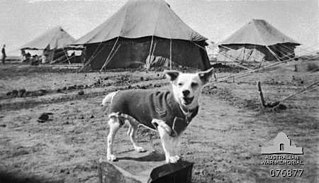
Horrie the Wog Dog was the unofficial mascot for the 2/1st Machine Gun Battalion of the Second Australian Imperial Force. An Egyptian terrier, the dog was befriended by a soldier serving in the unit when it was stationed in Egypt during the Second World War. The dog subsequently followed the battalion throughout various locations in the Middle East and in Greece and Crete, before being smuggled back to Australia in 1942. In 1945, the dog became the subject of a book by author Ion Idriess, and is believed to have been destroyed by quarantine officials, although this remains the subject of speculation with some researchers claiming that the dog survived after its owner switched it with another prior to destruction.

Ion Llewellyn Idriess was a prolific and influential Australian author. He wrote more than 50 books over 43 years between 1927 and 1969 – an average of one book every 10 months, and twice published three books in one year. His first book was Madman's Island, published in 1927 at the age of 38, and his last was written at the age of 79. Called Challenge of the North, it told of Idriess's ideas for developing the north of Australia.

The Sundowners is a 1952 novel by Australian writer Jon Cleary.
This article refers to the works of poets and novelists and specialised writers who have written about the Australian outback from first-hand experience. These works frequently address race relations in Australia, often from a personal point of view, with Australian Aboriginal people used as a theme or subject.
Phantom Gold is a 1936 Australian adventure film about the search for Lasseter's Reef. It was the first feature from director Rupert Kathner.

Madman's Island is a 1927 novel by Ion Idriess set in northern Australia. It was Idriess' first novel and was semi-autobiographical, although he invented the love interest at the insistence of the publisher.

Lasseter's Last Ride is an Australian book by Ion Idriess.
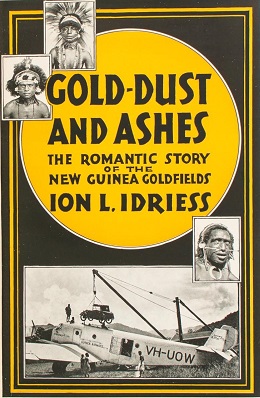
Gold Dust and Ashes is a book by Ion Idriess set in Bulolo in the New Guinea goldfields. It covers the history of gold exploration in the region, including occupation by the Germans, transfer to Australian governorship, the efforts of Cecil Levien to pioneer gold mining, and the role of New Guinea Airways in the industry.

Drums of Mer is a 1933 Australian novel by Ion Idriess set in the Torres Strait.

The Cattle King is an Australian biography of Sidney Kidman.
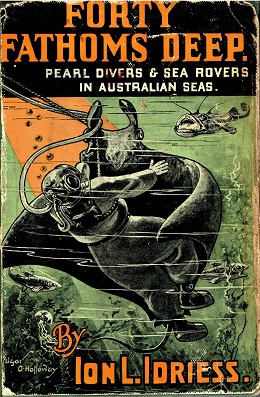
Forty Fathoms Deep: Pearldivers and Searovers in Australian Waters is a 1937 book from Ion Idriess about pearl divers.

The Australian Guerilla series was a series of 6 handbooks published in World War II by Ion Idriess. Idriess had been a sniper during World War I. The books were written when Australia was under threat of invasion during World War II.

Men of the Jungle is a 1932 book by Ion Idriess. It covered three years in the life of Idriess and his three companions as they worked in north-east Queensland.
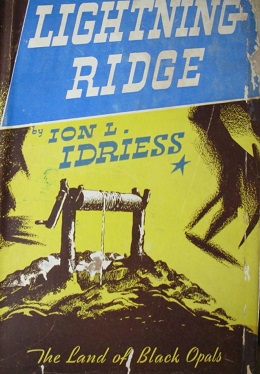
Lightning Ridge is a 1940 book by Ion Idriess. It was an autobiographical account of part of his life, in particular his time in opal mining in Lightning Ridge.

Outlaws of the Leopolds is a 1952 non-fiction history book by Ion Idriess. It concerned the aboriginal resistance leader Sandamara in the 1890s.

Nemarluk: King of the Wilds is a book by Ion Idriess about aboriginal warrior Nemarluk.
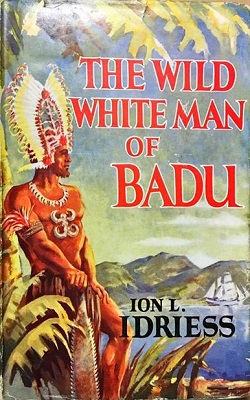
The Wild White Man of Badu is a 1950 novel by Ion Idriess. It is about two convicts who escape from Norfolk Island and travel to Badu Island on the Torres Strait.
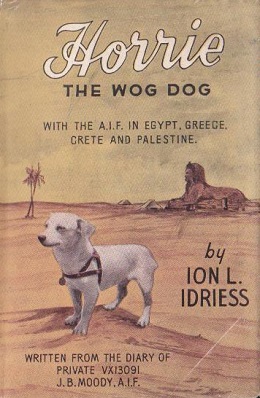
Horrie the Wog Dog is a 1945 book by Ion Idriess about the adventures of Horrie the Wog Dog, the Australian war mascot.
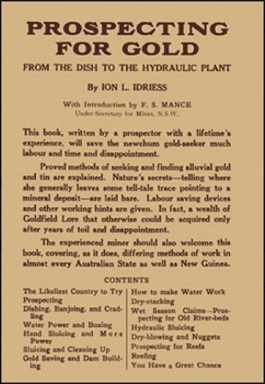
Prospecting for Gold is a 1931 non fiction book by Ion Idriess. It is a guide on how to prospect for gold.

















